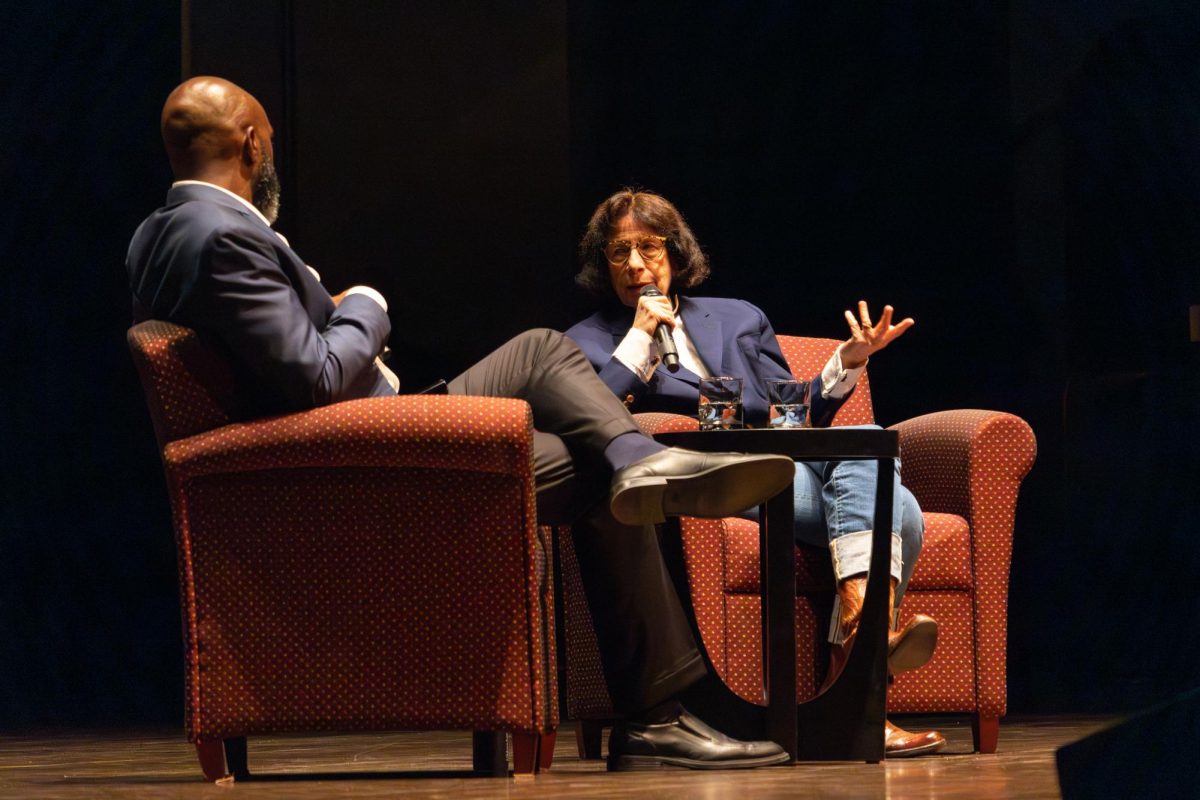Sheng Dong “A Moving Sound” charmed audiences with their classic-with-a-twist take on the music, dance, and culture of their native Taiwan on the evening of Wednesday, September 17 in the Bowker Auditorium. Utilizing traditional Chinese instruments, contemporary folk music flair, and with regally simplistic dance, Sheng Dong captivated audience members both young and old.
This was the company’s first performance at the university, but the third in its current U.S. tour of six states. The company’s appearance here was sponsored by The Asian Arts & Culture Program in partnership with the Five Colleges, Incorporated, and the Ministry of Culture in Taiwan as the first program in an initiative to bring three noted Taiwanese music groups to the university to perform.
Professor Ranjanaa Devi, Director of the Asian Arts & Culture Program who commissioned this performance of Sheng Dong, specifically chose to expose the 12-year-old company to the campus community because of the popularity of their performances at other local colleges. Devi said that Sheng Dong has the ability to “[wow] young audiences… with gorgeous harmonies, innovative styling, and humorous anecdotes,” as well as a lead vocalist/dancer whose “vocal range [astonishes].” Devi also noted that in her research of this company, they were acknowledged for their “mesmerizing integration of Chinese tradition and contemporary folk.”
Thankfully, Sheng Dong lived up to the standards of past reviews. Mia Hseih, lead singer and dancer, led her group of four accompanists in twelve original songs inspired by the poetry and traditional melodies of the Taiwanese culture. By fusing modern instruments, such as the bass guitar, with traditional Chinese instruments like the Erhu (bowed fiddle) and the Zhong ruan (Chinese guitar), Hsieh and company managed to create a celebratory, upbeat sound that distinctively acknowledged its cultural roots.
Though Hseih’s main responsibility was to provide the vocalization for all of the works presented, her dance moves also charmed, and enhanced the performance. Her dance consisted of a well-blended mix of pedestrian and technical movements, attuned to each song. One piece consisted of a series of turns, falls and direct, slashing arms, but in another number, she pantomimed putting on makeup and fixing her hair, In yet another, she pretended to be jostled around in a marketplace. No matter how Hseih chose to sing or move, she executed with a careful, proper sense of regal control appropriate to the dignity of the music being played by the traditional Chinese instruments.
However, Hseih only danced in about a quarter of the numbers. For those in which she was seated, the music felt too stiff and restricted. For one number, she had a large, gold silk scarf that she used with her arms to create the sensation of what looked like a bird flying. This prop became a distraction from the purity of the movement because she ended up wrapping and unwrapping the scarf from around her forearms multiple times to achieve her desired effects. It would have been easier for Hseih if she had forgone the scarf altogether and just used the fluidity of her already supple arms to create the illusion of “wings.”
Regardless, Hseih still wowed, both in her movement and her voice. Granted, there were occasions when her light, haunting voice was lost in the flurry of percussion and strings, but when she was heard, it glowed with a sweet, hypnotic light, bringing pleasant smiles and applause throughout the course of the program. In addition, the instrumentalists all played with such ease that when they began to sing in simple, beautiful polyphony with Hseih, it seemed so natural, requiring no additional effort whatsoever. It seemed like every harmony was naturally blended and effortless.
The entire night had a very streamlined feel to it, with chairs and instruments lined in front of a simple white curtain that changed color to fit the mood of each song. The only sophisticated contrast to this basic stage set-up was the traditional costumes worn by every performer, with Hseih’s including the most sequins and adornment. In spite of the fancier costumes, the night still kept its festive feel as Hseih told stories about the songs and the company between pieces and invited the audience to sing with her on the last two numbers, much to the amusement of a mostly non-Taiwanese crowd who could not understand what was being sung anyway. In general, the night felt like a trip to an exotic restaurant: it began with the uncertainty of not knowing what to expect and ended with a pleasant satisfaction and a new taste for an unfamiliar culture, all thanks to the efforts of the University of Massachusetts community.
Erica Weiss can be reached at [email protected].


















